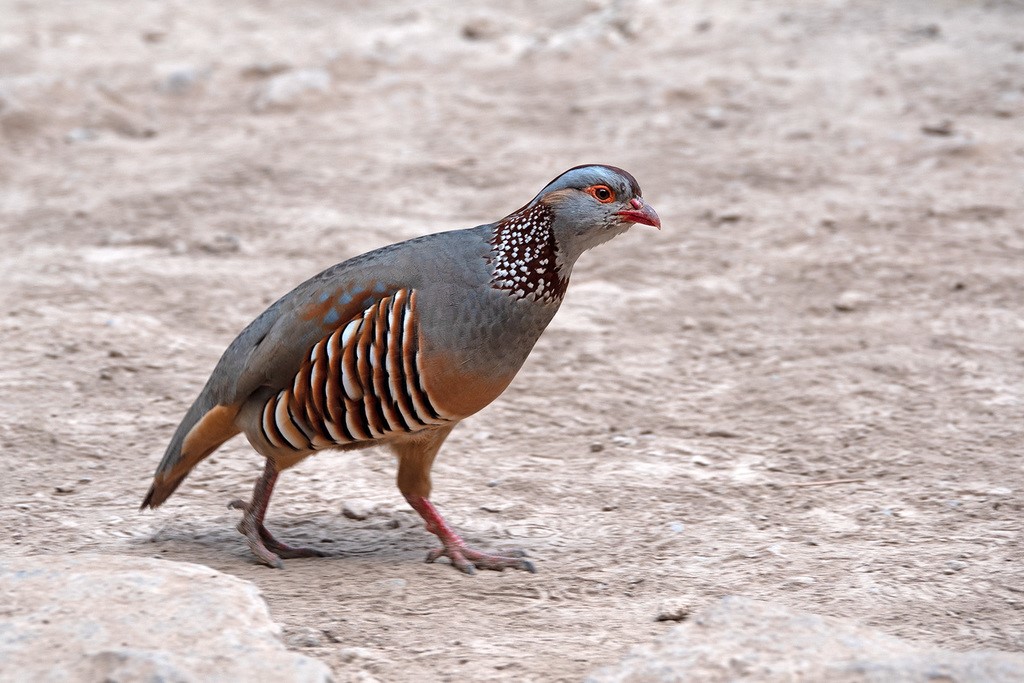Birdfinding.info ⇒ For visiting birdwatchers the most convenient sites to see Barbary Partridge are Upper Rock Nature Reserve and Europa Point on Gibraltar and several sites on the western side of Tenerife, including: Buenavista del Norte, Los Cristianos, and Golf del Sur. Also common on Fuerteventura and Lanzarote, in coastal Morocco: e.g., de Chasse Royal Reserve, Tamri National Park, and around the Oued Souss estuary, and in the Atlas Mountains above Marakkesh.
Barbary Partridge
Alectoris barbara
North Africa, where it occurs in various brushy habitats from lowlands up to around 3,300 m elevation.
From northern Western Sahara and northern Mauritania east through Morocco, northern Algeria, and Tunisia to northwestern Libya, and separately in northeastern Libya, the Haggar and Ajjer Mountains of southern Algeria, and the Tibesti area of northernmost Chad.
Isolated populations on Sardinia, Gibraltar, and the Canary Islands (all major islands except Gran Canaria) are thought to have resulted from introductions, but some may be natural.
Attempts to introduce it to Madeira and Hawaii (Molokai, Lanai, Maui, and the Big Island) have failed.
Identification
An attractive buffy-and-gray partridge with a scaly or barred pattern on its sides, a coral-red bill, orange eyering, buffy ear-stripe, rusty-brown crown, and a striking rusty-brown, white-dotted partial collar.
The upperparts are mostly gray and the underparts are mostly buffy.
When the tail is spread it shows bright rusty-brown corners, visible mainly in flight.
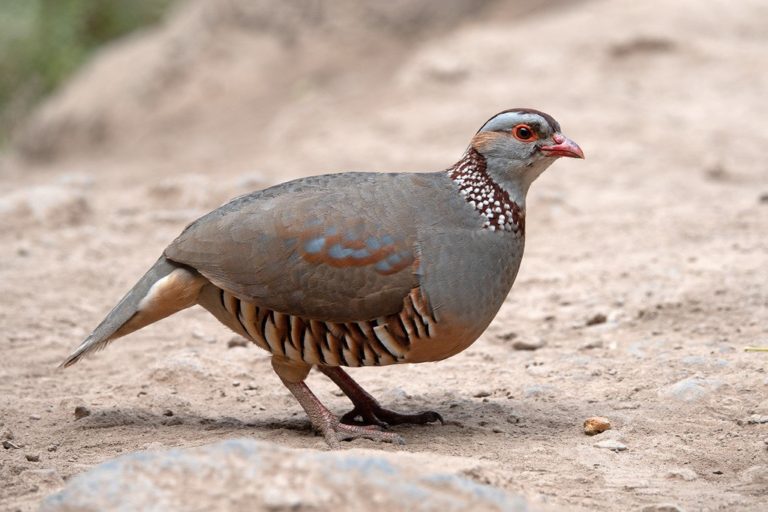
Barbary Partridge. (Tenerife, Canarias, Spain; February 29, 2020.) © Fero Bednar
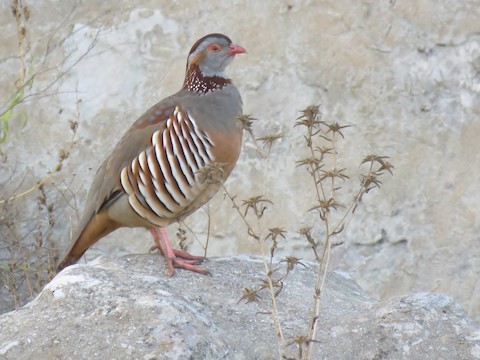
Barbary Partridge, showing barred pattern on the sides. (Gibraltar; October 13, 2018.) © Joe Baldwin
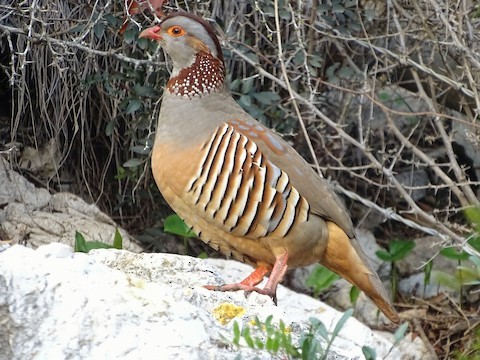
Barbary Partridge, showing barred pattern on the sides. (Europa Point, Gibraltar; December 5, 2019.) © A.J. Sepúlveda
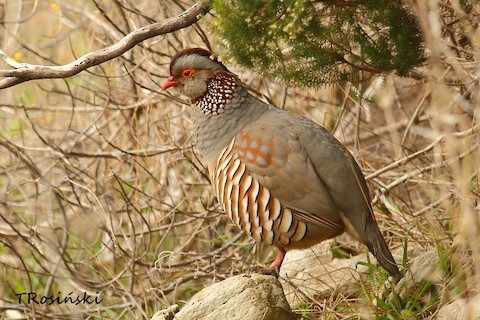
Barbary Partridge, showing scaly pattern on the sides. (Tenerife, Canarias, Spain; February 25, 2015.) © Tadeusz Rosinski
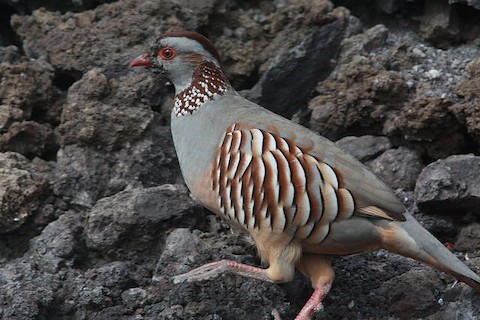
Barbary Partridge, showing scaly pattern on the sides. (Arguayo, Tenerife, Canarias, Spain; December 26, 2015.) © Paul van Els
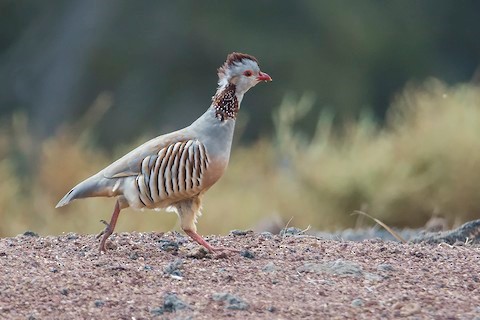
Barbary Partridge, with crest raised. (Costa Teguise Golf Club, Lanzarote, Canarias, Spain; September 14, 2015.) © Miguel Rouco
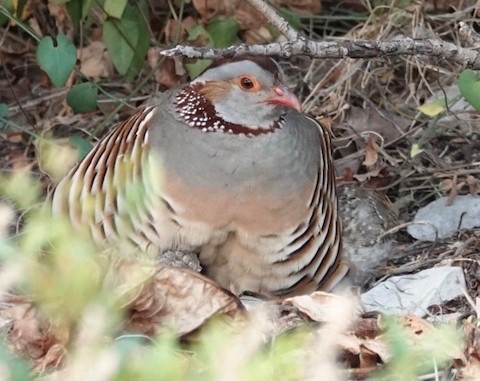
Barbary Partridge. (Upper Rock Nature Reserve, Gibraltar; May 30, 2019.) © Bonnie Clarfield-Bylin
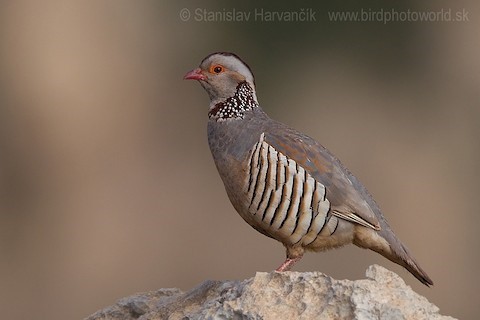
Barbary Partridge, showing narrow bars on the sides. (Tamri National Park, Sous-Massa-Draa, Morocco; April 19, 2015.) © Stanislav Harvančík

Barbary Partridge, with mud on its face, and showing buffy belly. (Embalse de Agulo, La Gomera, Canarias, Spain; January 18, 2020.) © Miguel Rouco
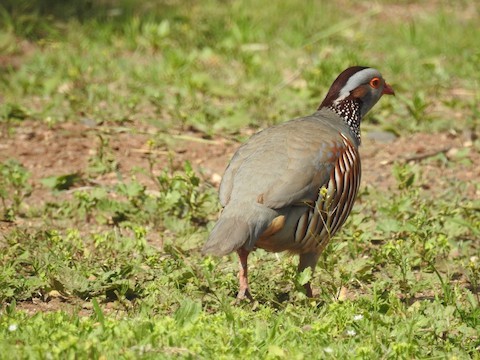
Barbary Partridge, showing dark rusty-brown crown. (Buenavista del Norte, Tenerife, Canarias, Spain; February 16, 2018.) © Ashwin Viswanathan
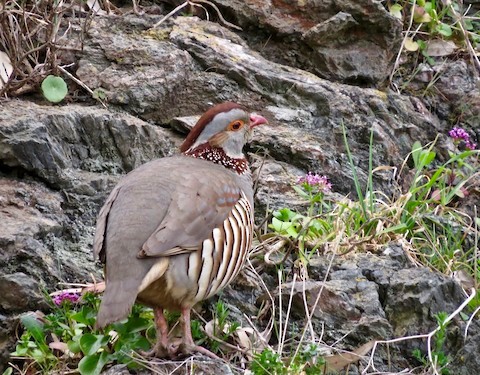
Barbary Partridge, dorsal view showing mostly pale-brownish back. (Edificio Cariño, Ceuta, Spain; March 15, 2019.) © Alexandre Justo Álvarez
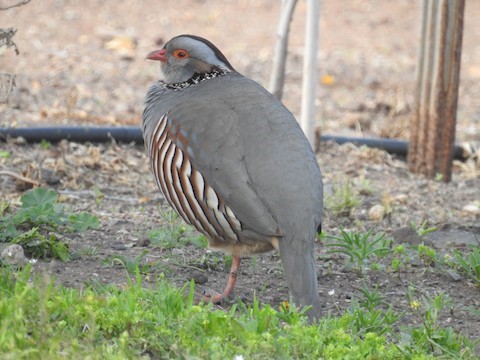
Barbary Partridge, showing mostly gray upperparts. (Buenavista del Norte, Tenerife, Canarias, Spain; February 16, 2018.) © Ashwin Viswanathan
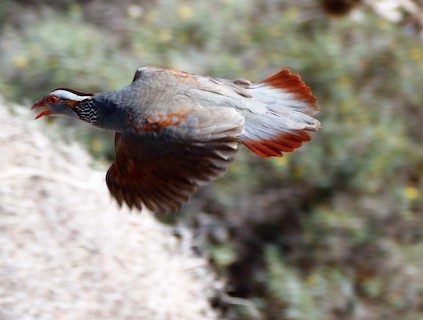
Barbary Partridge, in flight, showing bright rusty-brown tail corners. (Adeje, Tenerife, Canarias, Spain; December 13, 2017.) © Juan Carlos Dieguez
Notes
Polytypic species consisting of four recognized subspecies.
References
BirdLife International. 2016. Alectoris barbara. The IUCN Red List of Threatened Species 2016: e.T22678707A85855433. https://dx.doi.org/10.2305/IUCN.UK.2016-3.RLTS.T22678707A85855433.en. (Accessed March 25, 2020.)
eBird. 2020. eBird: An online database of bird distribution and abundance. Cornell Lab of Ornithology, Ithaca, N.Y. http://www.ebird.org. (Accessed March 25, 2020.)
Garcia-del-Rey, E. 2011. Field Guide to the Birds of Macaronesia: Azores, Madeira, Canary Islands, Cape Verde. Lynx Editions, Barcelona.
Garcia-del-Rey, E. 2018. Birds of the Canary Islands. Christopher Helm, London.
Hollom, P.A.D., R.F. Porter, S. Christensen, and I. Willis. 1988. Birds of the Middle East and North Africa. T & AD Poyser, Calton, England.
Madge, S., and P.J.K. McGowan. 2002. Pheasants, Partridges, and Grouse: A Guide to the Pheasants, Partridges, Quails, Grouse, Guineafowl, Buttonquails, and Sandgrouse of the World. Princeton University Press, Princeton, N.J.
McGowan, P.J.K., G.M. Kirwan, and E.F.J. Garcia. 2020. Barbary Partridge (Alectoris barbara). In: del Hoyo, J., Elliott, A., Sargatal, J., Christie, D.A. & de Juana, E. (eds.). Handbook of the Birds of the World Alive. Lynx Edicions, Barcelona. https://www.hbw.com/node/53382. (Accessed March 25, 2020.)
Mullarney, K., L. Svensson, D. Zetterström, and P.J. Grant. 1999. Birds of Europe. Princeton University Press, Princeton, N.J.
Xeno-Canto. 2020. Barbary Partridge – Alectoris barbara. https://www.xeno-canto.org/species/Alectoris-barbara. (Accessed March 25, 2020.)
